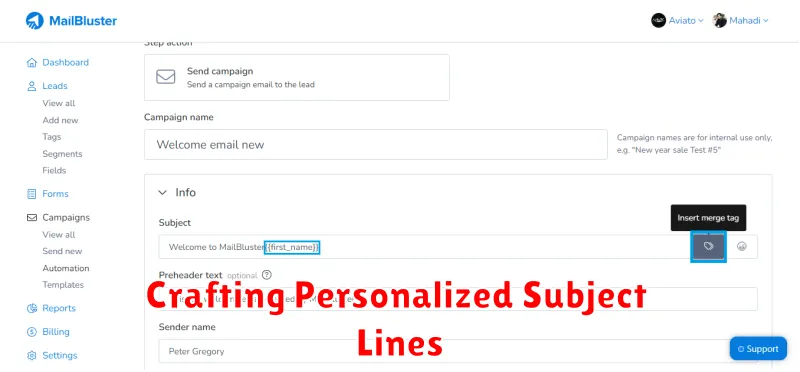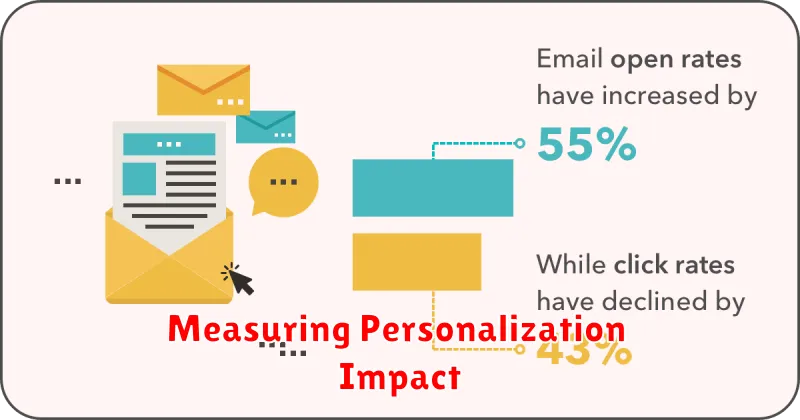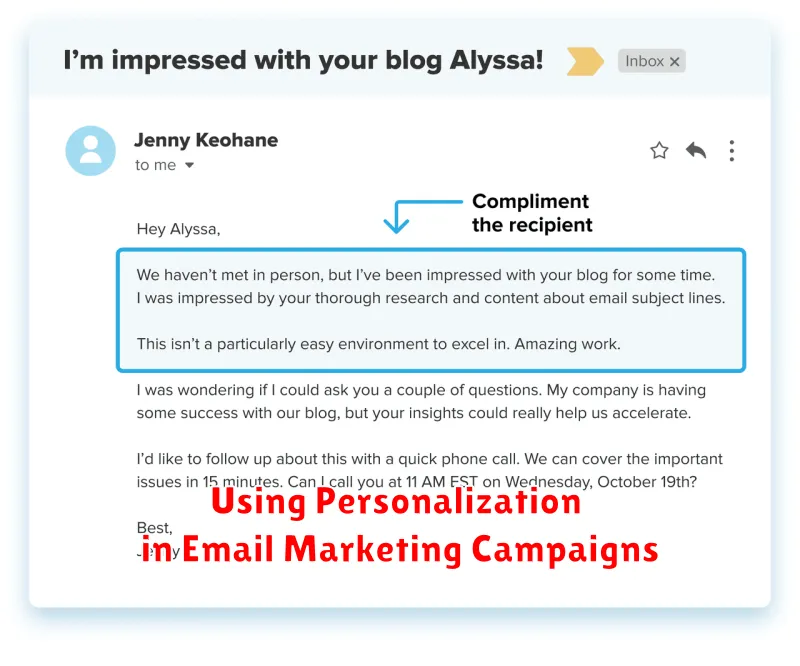In today’s competitive digital landscape, email marketing remains a powerful tool for businesses to connect with their audience. However, generic email blasts are often ignored, lost in the overflowing inboxes of potential customers. To truly capture attention and drive conversions, marketers must leverage the power of personalization. Personalized email marketing campaigns deliver targeted messages tailored to individual subscribers, fostering stronger connections, increasing engagement, and ultimately boosting ROI.
This article explores the essential strategies for implementing effective personalization in email marketing campaigns. We’ll delve into the various techniques you can employ to craft personalized emails that resonate with your subscribers, from using their names and purchase history to segmenting your audience for targeted messaging. Discover how to leverage data-driven insights to create compelling email marketing campaigns that deliver the right message, to the right person, at the right time, maximizing your impact and achieving your marketing objectives. By understanding the nuances of email personalization, you can transform your email marketing from a generic outreach into a powerful engine for growth.
Collecting Relevant Subscriber Data
Effective personalization relies on having the right data. Collecting relevant subscriber data is crucial for tailoring email campaigns and maximizing their impact. This involves gathering information beyond just the email address.
Consider collecting data such as:
- Demographics (age, gender, location)
- Purchase history (past products or services purchased)
- Website activity (pages visited, items viewed)
- Email engagement (opens, clicks, unsubscribes)
- Preferences (communication frequency, product categories)
Methods for collecting data include signup forms, preference centers, website tracking, and purchase history analysis. Ensure compliance with data privacy regulations and clearly communicate your data collection practices to subscribers.
Segmenting Your Audience
Segmentation is crucial for effective personalized email marketing. It involves dividing your subscriber list into smaller, more homogenous groups based on shared characteristics. This allows you to tailor your messaging to resonate with specific audience segments, improving engagement and conversion rates.
Several factors can be used for segmentation, including:
- Demographics: Age, gender, location, etc.
- Behavior: Past purchases, website activity, email engagement, etc.
- Psychographics: Interests, values, lifestyle, etc.
- Purchase History: Products purchased, purchase frequency, average order value, etc.
By understanding these different aspects of your audience, you can create targeted email campaigns that deliver relevant content, increasing the likelihood of conversions.
Crafting Personalized Subject Lines

The subject line is the first, and often only, impression you make on a recipient. A personalized subject line significantly increases the likelihood of an email being opened. It grabs attention amidst the clutter of a typical inbox and signals relevance to the individual.
Effective personalization goes beyond simply inserting the recipient’s name. While using their name is a good starting point, consider incorporating other data points to create a more compelling and targeted message. Think about using information such as their past purchases, browsing history, location, or interests.
For example, instead of a generic subject line like “New Arrivals,” a personalized alternative could be, “New Arrivals Based on Your Recent Browsing.” This immediately communicates value and piques the recipient’s curiosity.
Key considerations for crafting personalized subject lines include:
- Brevity: Keep it concise and to the point.
- Clarity: Clearly communicate the email’s content.
- Value Proposition: Highlight the benefit to the recipient.
Using Dynamic Content in Emails
Dynamic content takes email personalization a step further by allowing you to customize the entire email based on individual recipient data. Unlike simple personalization tokens that insert a name or location, dynamic content can change larger elements, such as images, product recommendations, and even entire sections of text.
This level of customization significantly enhances the relevance of your emails. Imagine sending a promotional email about winter apparel. Using dynamic content, subscribers in warmer climates could receive promotions for summer clothing instead, resulting in a more engaging and potentially profitable experience.
Implementing dynamic content requires a robust email marketing platform capable of segmenting your audience and serving different content variations based on predefined rules. These rules can be based on demographics, past purchase behavior, website activity, or any other data you’ve collected about your subscribers.
Key benefits of using dynamic content include increased open and click-through rates, improved conversion rates, stronger customer relationships, and a reduction in unsubscribe rates.
Sending Based on Behavior and Interests
Behavior-based email marketing leverages valuable data insights to deliver highly targeted messages. By tracking website activity, purchase history, and email engagement, marketers can segment their audience effectively.
This allows for sending timely and relevant content that resonates with individual subscribers. For instance, if a customer abandons a shopping cart, a personalized email reminding them of their items can encourage conversion. Similarly, based on past purchases, targeted product recommendations can be sent, promoting cross-selling and upselling opportunities.
Interest-based segmentation further refines targeting. Gathering data about customer preferences, such as favorite product categories or content topics, enables the creation of highly personalized email campaigns. This ensures that subscribers receive information they find genuinely valuable, increasing engagement and fostering stronger customer relationships.
Measuring Personalization Impact

Measuring the effectiveness of your personalized email campaigns is crucial. By tracking key metrics, you can understand what resonates with your audience and optimize future campaigns. Key Performance Indicators (KPIs) offer valuable insights into the success of your personalization strategies.
Track metrics such as open rates, click-through rates (CTR), conversion rates, and revenue generated. Compare these metrics to campaigns that didn’t utilize personalization. A significant lift in these KPIs indicates the positive impact of your personalization efforts.
Beyond these standard metrics, consider measuring customer lifetime value (CLTV). Personalized emails can foster stronger customer relationships, leading to increased CLTV. Analyzing how personalization affects CLTV provides a long-term perspective on its effectiveness.
Avoiding Over-Personalization Mistakes
While personalization can significantly boost email marketing success, overdoing it can backfire. It’s crucial to strike a balance between personalized content and respecting user privacy. Avoid using excessively personal information that might make recipients uncomfortable.
Context is key. Don’t use personalized data just for the sake of it. Ensure it’s relevant to the message and adds value for the recipient. For example, referencing a past purchase is appropriate in a follow-up email suggesting related products, but using it in an unrelated promotional email can seem creepy.
Data privacy is paramount. Be transparent about the data you collect and how you use it. Ensure you have proper consent to personalize emails and offer users the option to opt-out of personalized messaging. Respecting user privacy builds trust and strengthens your brand reputation.
Test and refine your approach. A/B test different levels of personalization to see what resonates best with your audience. Monitor key metrics like open rates, click-through rates, and conversion rates to optimize your personalization strategy.

